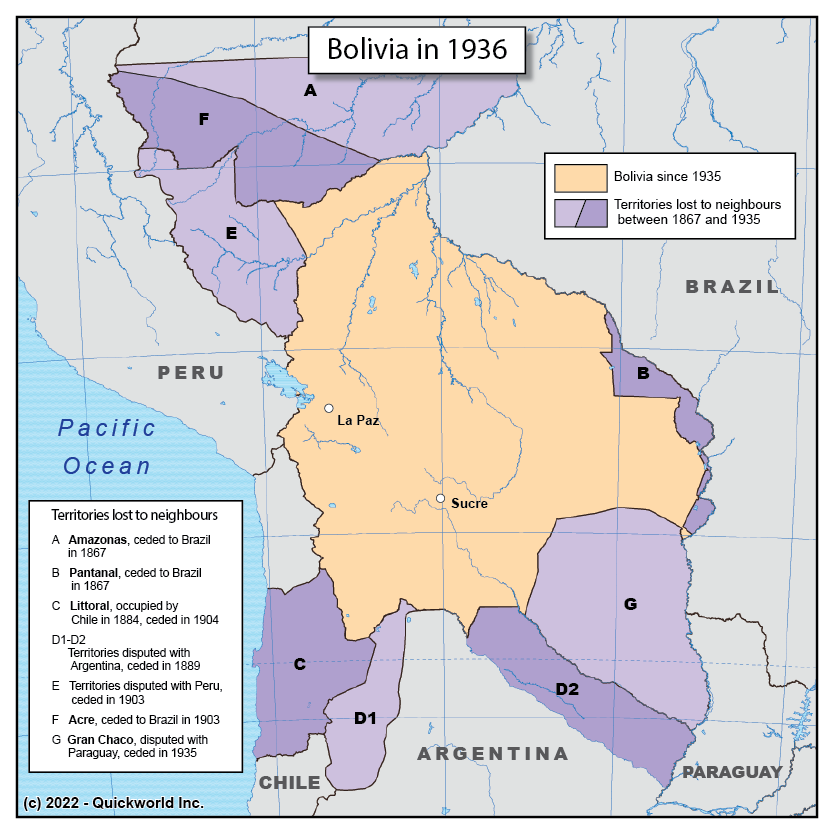The end of the Gran Chaco war in 1935 marks the end of the territorial changes that have affected Bolivia since it became a country in 1839. This is the last of a string of territorial concessions that started in 1867, giving Brazil large areas of land in the Amazonas and Pantanal regions. Later came the very damaging War of the Pacific, during which Chile occupied, and later annexed, Bolivia's sole maritime province -- Bolivia has kept since then a military navy, making it the only country in the World to have a navy but no coastline. The latter part of the Nineteenth Century also saw the resolution of border disputes with Argentina and Peru, mostly to the detriment of Bolivia. The influx of Brazilian rubber farmers in the Acre region led to a secession, followed by annexation of that territory by Brazil in 1903.
When its final dispute with Paraguay escalated to an open conflict in 1932, the war was extremely violent, with estimates ranging above 200,000 casualties over the control of a region that had very scarce population. The supposed presence of oil in the Gran Chaco led major oil companies to financially support both powers, although it was later revealed that there was very little of it. Paraguay gained ground militarily and the ceasefire agreement of 1935 left most of the Gran Chaco to Paraguay, although the northernmost part remained under Bolivian sovereignty. The final border treaty was signed in 1938, almost exactly 100 years after the independence of Bolivia.
More on Bolivia
Bolivia in 1936


